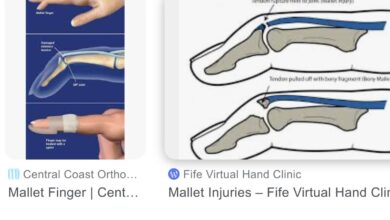GOUT: Acute, Painful Arthritis

Podagra is a word rarely used nowadays. It’s a Greek term which translated means “foot trap.” It is an appropriate name because for many decades, podagra was the name given to a form of painful, acute arthritis caused by the deposition of uric acid crystals in the first metatarsal phalangeal (MTP) joint of the foot. The 1st MTP is the joint that connects the big toe to the foot and is the most common joint affected by that acute arthritis, GOUT.
Monosodium urate (MSU) crystals are “trapped” (actually deposited) in the joint resulting in the acute, sudden onset, usually at night, of severe pain, redness and swelling of the joint. And the patient’s foot is “trapped” in pain. Other target joints for gout are the ankle, wrist, and elbow, but at a much lesser frequency.
Why the predilection for the 1st MTPJ? A 2011 study reported in The Journal of Foot and Ankle Research concluded the frequent presence of osteoarthritis in that joint enhanced the deposition of MSU crystals resulting over time in acute attacks of gout. Additionally, continual physical stress on the MTPJ and its cooler temperature contributed to crystal accumulation.
To have gout, in the first place, one has to have too much Uric Acid in the bloodstream. This occurs through overproduction or underelimination of uric acid by one of several means, discussed below. But there is a definite genetic pre-disposition for Gout. It’s inherited, so if your father, uncle, or grandfather had it, you’re probably going to, also. Unless you do some preventive measures to lower your Uric Acid, you eventually will have an attack.
Ten percent (10%) of Gout cases are the result of overproduction of Uric Acid by the following means:
Diet high in Purines — Meat (beef, pork, lamb, organ meats), Seafood (shrimp, lobster),
Beer
Excessive Purine Manufacture—Malignancy, Tumor lysis Syndrome (rapid cell death)
Purine Retention — Rare enzyme deficiency disorders
Purine breakdown — Glycogen storage Disease (rare)
Ninety percent (90%) of Gout cases are from underelimination (underexcretion) of Uric Acid by the following means:
Urinary underelimination — Diuretic drugs (thiazides—HCTZ), Kidney failure (No urine output, no nitrogen elimination)
Urinary reabsorption — Alcohol, Genetic defects
So if you’re a middle-aged, or elderly, obese male with a family history of gout, get your Uric Acid tested ASAP.
In a large nationwide study of 5,467 research centers just reported, the prevalence of Gout was determined to be 3.9% (9.2 million) among U.S. adults. Men had almost twice the prevalence at 5.2% (5.9 million) than women (2.7%, 3.3 million). This same study found that of those diagnosed with gout, only 33% were on medication to prevent recurrence.
Gout is the most common inflammatory arthritis. Osteoarthritis is far more common but doesn’t have the acute, nocturnal, flare-ups characterized by redness, swelling, and severe pain (the signs of inflammation) of a single joint present in Gout. The goal of long-term treatment is to lower the level of Uric Acid in the blood stream of sufferers and prevent acute flare-ups. Acute flare-ups are treated aggressively to suppress inflammation and relieve pain and get the patient walking, pain-free, again. Long-standing, untreated elevated Uric Acid leads to joint damage. The term for joints damaged by Uric Acid crystals is Tophaceous Gout. Deposits of Uric Acid crystals collect in and around the affected joint(s) and form large, irregularly shaped module called Tophi. I honestly never saw a case of Tophaceous Gout, but have seen many photographic examples. The joints are very knobby and deformed.
Gouty Arthritis and Hyperuricemia (high blood levels of Uric Acid) have 4 phases:
Asymptomatic hyperuricemia —high blood level but no pain or swelling
Acute gouty arthritis — flare-up/attack“
Intercritical period”— time between flaresChronic
Chronic Tophaceous gout
The diagnosis is usually made by observation of an acutely red, swollen, tender, and painful 1st MTPJ, or other joint similarly affected, in a patient with high blood Uric Acid. That is termed a “clinical diagnosis.” A “definitive diagnosis,” however, is made by withdrawing fluid from the affected joint and examining it with a special microscope for the presence of monosodium urate (MSU) crystals. That confirms with 100% certainty the patient has Gout.
Acute Gout Flare-ups are treated to reduce inflammation and relieve pain. I used the following treatment regimen routinely with good results:
1. Indomethacin (NSAID) 100 mg orally stat followed by 25 mg every 6 hours until pain
ceased
2. Alternatives: naproxen, ibuprofen, Prednisone orally, joint injection with cortisone, oral
colchicine dosed once per hour until pain ceases or patient has diarrhea
3. Obtain Uric Acid blood level
4. Begin Uric Acid-lowering drug to prevent future flare-ups
Preventive Therapies for Recurrent attacks:
1. Drugs that block Uric Acid production—Allopurinol, Uloric (febuxostat)
2. Drugs that improve Uric Acid elimination—Probenecid (Benemid), lesinurad (Zurampic)
These drugs increase Uric Acid in the urine and may cause Uric Acid kidney stones
Alternative, non-drug treatments to lower Uric Acid:
1. Coffee-lowers Uric Acid
2. Vitamin C supplements
3. Cherries
4. Drink plenty of fluids—not alcohol, soda, or juices (sweetened with fructose)
5. Limit foods high in Purines —red meat, organ meats, seafood
6. Exercise regularly
Dr. G’s Opinion: I saw gout several times a year over my 40 years. The worst case was an overweight (but not obese) man in his 50’s who had poor eating habits. I knew him to be a “junk food junkie.” Oddly enough, he had extremely painful acute gout in one knee, not in the 1st MTPJ. It cleared after a couple of weeks of treatment then recurred in the other knee just as badly. His Uric Acid was over 12 (normal is 3.4 – 7.0) so his case was an example of how starting drugs to lower one’s Uric Acid level can precipitate an acute flare-up. That does occasionally happen and needs to be anticipated. His second flare-up subsided, nicely. He remained on probenecid long-term and had no further flare-ups that I know of.
Gout is a bugger of a disease when it flares. The figure of 33% compliance to drug therapy by those with recurrent attacks is startling because I would think you would do anything you could to prevent it from flaring up. But maybe it’s like smoking to those folks who have coronary disease or a heart attack and won’t, or can’t, stop.
References: Foltz-Gray D. Managing a Gout Attack. Arthritis Foundation: arthritis.org/about-arthritis/types/gout/articles/how-to-stop-a-gout-attack.
mayoclinic.org/diseases-conditions/gout/diagnosis-treatment
Aung T, Myung G, FitzGerald JD. Treatment Approaches and adherence to urate-lowering therapy for patients with Gout. Patient Prefer Adherence. 2017 Apr 19;11:795-800.
Chen-Xu M, Yokose C, Rai SK, Pillinger MH, Choi HK. Contemporary Prevalence of Gout and Hyperuricemia in the United States and Decadal Trends: The National Health and Nutrition Examination Survey 2007-2016. Arthritis Rheumatol. 2019 Jan 7
Chisari E, Yaghmour KM, Peat F, Khan W. Patients Presenting with a Hot, Swollen Joint: a Single-Centre Retrospective Analysis. Curr Rheumatol Rev 2019 Jan 21.
Ragab G, Elshahaly M, Bardin T. Gout: An old disease in new perspective-A Review. J Adv Res. 2017 Sep;8(5):495-511.
Hainer, BL, Matheson E, Wilkes, RT. Diagnosis, Treatment, and Prevention of Gout. Am Fam Phy 2014 Dec 15;90(12):831-836.
Roddy E. Revisiting the pathogenesis of podagra: why does gout Target the foot? J Foot & Ankle Research 2011, 4:13.




